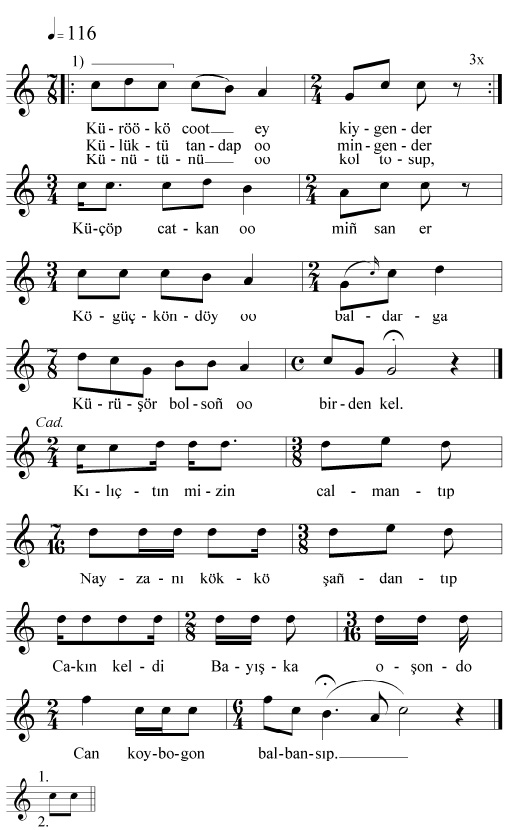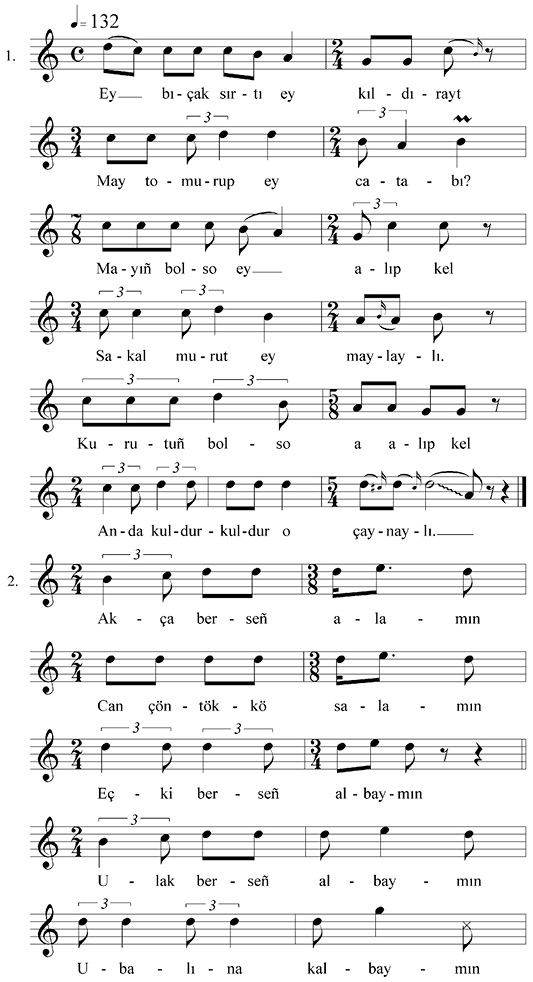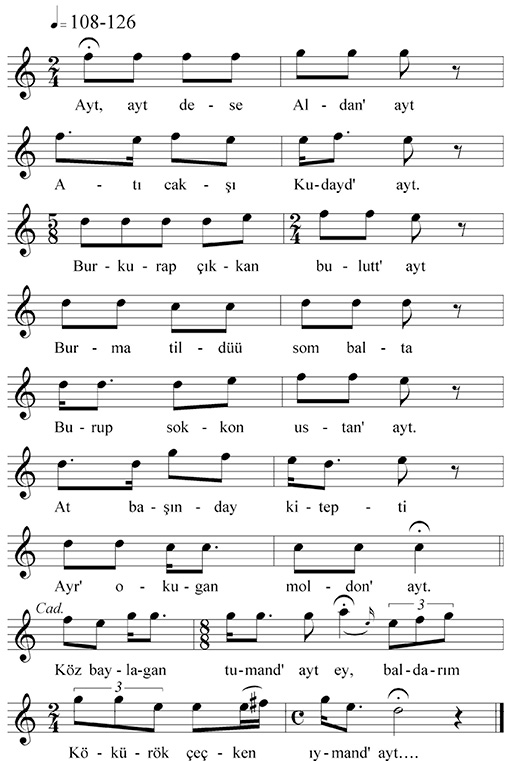- 1. Twin-bar tunes (ex.1-11, №1-58)
- Twin-bar tunes based on the g,-c bichord
- Twin-bar tunes based on rotating motifs
- Twin-bar tunes with descending/hill-shaped lines
- Motifs with a downward leap at the end of the line
- Motivic processes
- 2. Tunes moving on Ionian scales (ex.12-24, №59-164))
- Laments and their relatives
- Two-lined tunes of Major character with higher main cadences and their four-lined relatives
- Four-lined tunes of Major character
- 3. Aeolian tunes (ex.25-36, №165-238)
- Laments and related tunes
- Aeolian tunes with higher main cadence
- Four-lined tunes of Minor character
- Valley-shaped, ascending or undulating first line
- 4. Caramazan religious tunes (ex.37-41, №239-326)
- 5. Tunes of domed structure (ex.42-43, №327-332)
1.5. Motivic processes (ex.9-11, №51-58)
During the performance of epics short lines alternate and sometimes the one- or two-lined forms of twin-bar character organize into five-six or more lined structures. Recitation often begins with one of the so-far not mentioned C-C-B-A | G,-G, G, or E-E-D-D | E-D-C G, motifs later followed by motifs descending from higher pitch levels. On the whole, the performance is similar to that of terme tunes of the Kazakh bahsis. For the sake of illustration, let me schematize a few typical processes.
1.5.1. Consecutive repetition of motifs (ex.9-10, №51-52). Recitation often occurs on parts that are independent of each other, and the multiple repetition of a motif can be followed by the multiple repetition of another motif. E.g. in ex.9 a familiar valley-shaped motif is followed by a basically two-lined AAAB cadenza. The latter shows similarities to some tunes of the Kyrgyz “lament style” to be discussed later. Ex.10 has similar structure: it also illustrates the eventuality of the cadences and even of the closing of whole motivic processes in the recitation. Tunes №51-52 display similar structures with different motifs.
1.5.2. “Domed” line structure (№53-54). In some cases the process cannot be subdivided into distinct motifs. One example: the process starts with low lines, continues somewhat higher and closes again lower (№53).
1.5.3. Recitation around the 7th degree, followed by a descent (ex.11, №55-58). It is, however, more frequent that at least from the second lines the tunes recite around G and the rest of the lines gradually descend to the last line closing on C.




